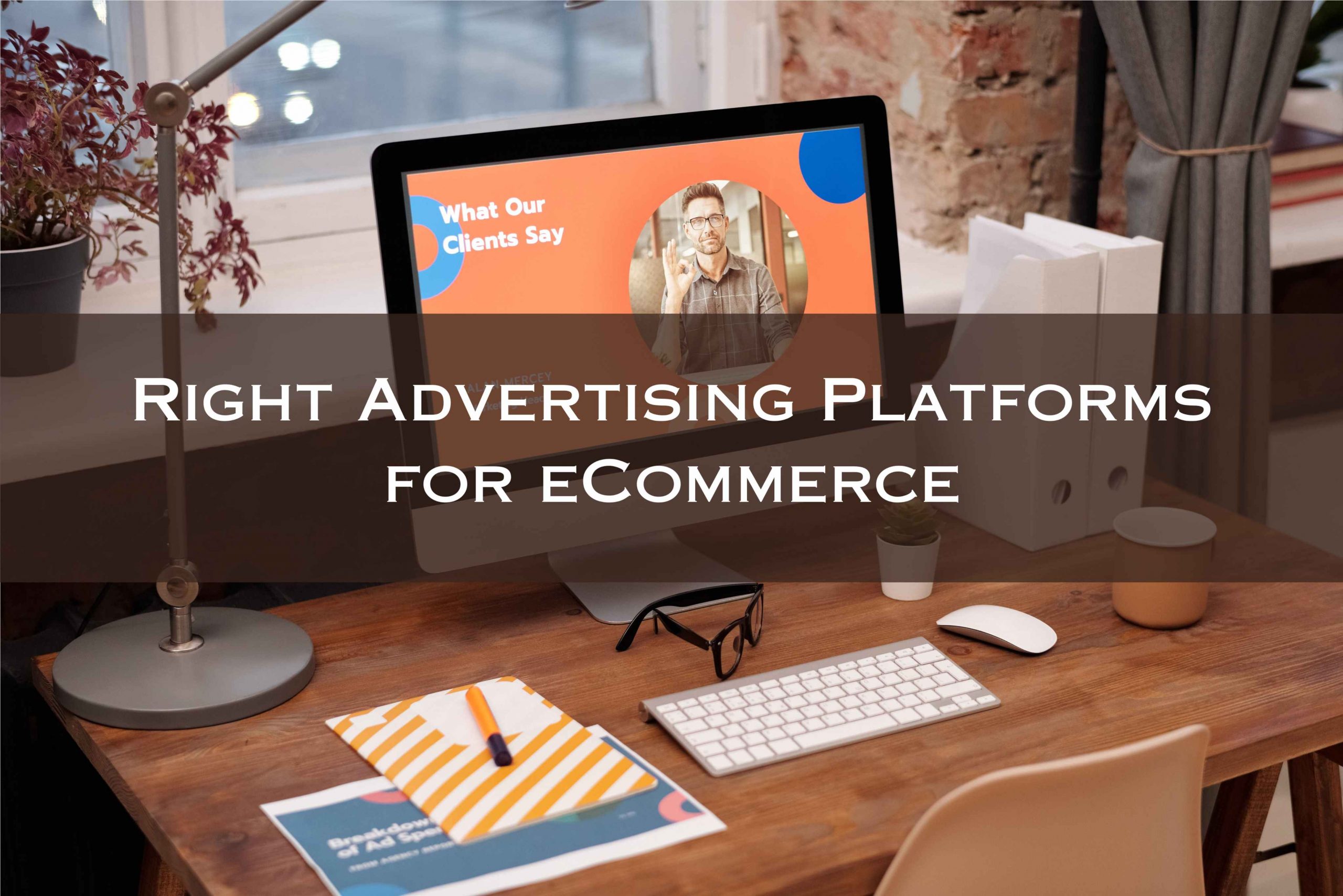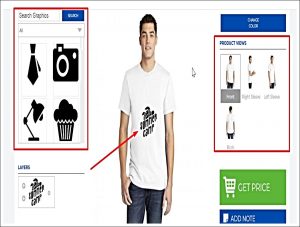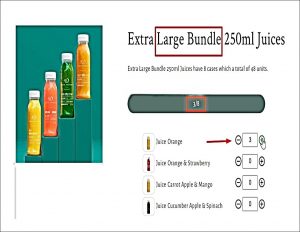
Businesses in today’s digital environment must be strategic with marketing expenses or risk losing customers, who are actively trying to save money. But, knowing where to start researching online can be challenging. There are several options available nowadays, and as a result, the majority of purchases are made online now rather than offline.
Statista reports that in June of 2020, there were 22 billion monthly visits to retail eCommerce websites worldwide, and for B2B wholesale the number is higher.
eCommerce businesses can benefit significantly from advertising their products and services online. Your click-through rate (CTR), conversion rate (CR), and bottom line could all benefit from a strategic blend of search, social, and display ads. In the following article, learn about best practices, industry suggestions, and expert tips for online store promotion.
In this article, we will discuss choosing the right advertising platforms for B2B eCommerce and what facts you need to know before deciding.
Factors To Choose the Right Advertising Platforms For B2B eCommerce
It is more complex than opening an online business. Like opening a traditional storefront, setting up an online store involves appropriate preparation and an advertising strategy.
To implement an advertising strategy, choosing a platform is essential. Low monthly subscriptions and user-friendliness are attractive features of several eCommerce platforms, though there are a few more factors.
Before deciding on an eCommerce platform, it is essential to consider some factors. You need to remember that not all of the platform’s features will be relevant to your company, and you need to select a system that is compatible with the ones.
- Knowing about the Expenses
- Quantity of Available Add-On Features
- Customer-Focused Services and Facilities
- Possible Methods of Payment
- Security Check is Essential
- Capabilities in Search Engine Optimization (SEO)
- Analytics Based on Data
- Customization of Website Layout
- Mobile-Friendliness
Factor 1- Knowing about the Expenses
Knowing the price of hosting an online store will allow you to plan for expenses and calculate a potential return on investment. Some eCommerce platforms provide packages that incorporate additional services, such as web design, security, functionality, maintenance, and hosting, for an extra fee.
Initial investment costs are essential but need to be increased. When starting an online store, it is crucial to anticipate some initial costs that could quickly build up.
For example, if you are interested in running a product personalization business on a platform like Shopify, then at the beginner level, you can install a product personalizer that will cut the cost of designing. Let’s look at what a product customizer looks like-

Here, the store owner facilitates a stress-free product personalization process for the benefit of his customers with the help of an extensive product personalizer. Similar to how a B2C retailer manages its stock with the help of a bundle builder tool, a B2B wholesaler may do the same.
Customers can save money by purchasing multiple items at once in a single application of this type. Additionally, the shop owner bundles them up based on what’s in his stock, or he can apply MOQ well. Let’s have a look-

Here, this storeowner allows his customers to buy 8 juices together. Now, his customer must fulfill the requirements; otherwise, he cannot add to the cart. These things have become possible with Shopify’s third-party bundle-builder app.
Factor 2- Quantity of Available Add-On Features
The cost of the platform’s add-ons could increase the overall price, even if the base plan is affordable. Creating a prioritized list of essential features for your online store can help you choose a service that meets your needs. It is necessary to incorporate third-party tools like a payment gateway and an analytics dashboard.
Factor 3- Customer-Focused Services and Facilities
Every company should prioritize UX above all else. Easy page navigation and eye-catching designs are not the only ways to strengthen your connection with clients online.
Customer assistance is one method of facilitating two-way communication with clients. An effective customer service system can help customers have their problems fixed rapidly and in the way that best suits them. The eCommerce platform must foresee potential technological issues and provide optimal solutions.
New tools, such as AI, are becoming available to digital marketers, allowing them to give superior service to their clients. Some services provide AI-driven help desks to resolve frequent issues immediately.
Factor 4- Possible Methods of Payment
What methods of payment do your regulars use? Do they use redirects and off-site purchases or pay using a credit or debit card linked to their bank account? Can buyers from other countries use the same payment methods?
It would help to look for an online store that accepts various payment methods. The ability to obtain multiple currencies and payment types can help your company expand internationally.
It’s essential to prioritize ease of use, security, and the expansion of available payment methods when selecting a payment gateway to develop. When customers have more ways to pay, they are more likely to complete a purchase.
Factor 5- Security Check is Essential
Security measures boost company reputation. An effective eCommerce security system can detect and eradicate most online threats. Online merchants risk losing customers following a data breach because consumers lose trust in organizations that fail to protect their data.
Consumers have a right to privacy. Their personal and financial information should never be disclosed outside your firm. Authentication. A password, two-factor authentication, or one-time PIN must verify each customer’s identity during a transaction.
Contract Terms and Conditions This means that you and your clients are making decisions and taking actions during the transaction process with full awareness and intent. Verify that the platform includes PCI compliance, data backups, and other security measures discussed above.
Factor 6- Capabilities in Search Engine Optimization (SEO)
Employing a search engine optimization strategy will increase your website’s free, organic traffic. When people look for information about a product or service online, they often turn to search engines like Google and Bing.
The domain name, meta descriptions, image alt tags, navigation links, page titles, headings, IP addresses, and similar factors are all important to consider when optimizing a website for search engines.
Factor 7- Analytics Based on Data
Collecting data to identify customer behavior patterns and make well-informed decisions is essential. Therefore, an eCommerce business must employ a reliable analytics platform. You will not need to sync data and create new insights and solutions on a separate analytics platform because most eCommerce platforms already incorporate their analytics. Moreover, extensions are available for most platforms if you work with an alternative analytics system.
Factor 8- Customization of Website Layout
Some eCommerce platforms feature pre-made templates that might save you time and money when setting up your online store.
Still, most companies prefer to design and maintain their websites to gain an edge. Custom web designs are available from most eCommerce providers, although they typically come at a higher price than website themes.
Factor 9- Mobile-Friendliness
With an ever-increasing percentage of consumers shopping online, your B2B eCommerce platform must be optimized for mobile use to ensure a positive customer experience and reduce cart abandonment.
Remember that you will need more than just swipe capability and navigation when selecting an eCommerce platform. Inquire about features only available on mobile devices, such as different card layouts, touch ID, click-to-call, and click-to-map buttons.
The Top 10 Right Advertising Platforms for eCommerce

- Bing
- Tiktok
- Snapchat
- Youtube
Platform 1- Google
Google Ads, formerly Google Adwords, is a popular advertising network since it allows paid search ads on Google’s SERPs.Businesses looking to expand their brand or consumer base should consider this platform’s flexibility in managing search and display ads. eCommerce enterprises can benefit from Google’s 9 billion daily searches.
According to Converted, Online shops can get a 2:1 ROAS and 800% with the Google Search Network.
Online advertising with Google Ads is affordable and effective, especially for small and medium-sized businesses on a budget. Remember that such fees might soon reach $150,000 per year for larger companies.
Therefore, this advertising investment must pay off. Google’s reach is great, but rival search engines must work more to attract users, which may raise advertising prices.
Google may also be pickier about adverts than other search advertising platforms. Some Google users say support personnel must fulfill their requirements.
Platform 2- Bing
Despite Bing’s recent growth, Google remains the most used search engine. Microsoft estimates its Bing Network processes 14.5 billion monthly searches from 687 million unique users, representing 14.5% of the global PC desktop search engine market.
Online purchases by 100% of Microsoft Search Network users last week may be the most significant. Bing Ads’ ability to reach shoppers solidifies its place in any holistic advertising approach. Like Google Shopping Ads, Bing purchasing enables you to get this growing online shopping population.
Online advertising on Bing is popular due to decreased competition. Less competition implies more digital marketing success. Search Engine People found that Bing ads have over 70% lower CPCs than Google ads. Customers using Yahoo, AOL, or Bing’s other partner sites will also see your adverts. Thus, user interaction will not be limited to Google Ads campaigns.
Remember that Bing has limits. Its search volume and audience are far smaller than Google Ads. Bing Ads releases new features slower than Google, which can reduce reporting detail. Still, Bing Ads is an excellent choice for firms who want to reach many individuals in a less competitive industry.
Platform 3- Facebook
If you’re going to reach hundreds of millions of potential customers daily, you need to include Facebook advertisements in your digital marketing strategy. Facebook provides a wide variety of online advertising formats that may be adapted to meet the needs of different campaigns.
There are various ways to market on Facebook, from increasing your reach to display your items directly to your target audience to using collection advertisements to simplify the shopping process within Facebook itself.
There are several of benefits to advertising on Facebook. To begin, Facebook has the most extensive user base of any social media platform, with billions of active accounts providing access to an almost infinite pool of prospective buyers. It has broad appeal among different age groups and sexes, giving you a better chance of reaching your target audience.
In addition, the platform’s advanced targeting features make it possible to fine-tune advertisements by considering users’ locations, professions, hobbies, and past actions. In addition, it is simple to control how much money is spent on Facebook advertisements thanks to clear budgeting tools and the ability to track and cease spending once limits are reached quickly.
Facebook is among the most popular video ad networks because it provides an excellent venue for publishers to display exclusive material and increase user engagement.
However, we must not gloss over the difficulties. Facebook advertising expenses have been on the rise as competition has heated up. Although Facebook’s advertising rates are not the lowest, they are competitive.
For smaller B2B eCommerce firms that may not have the resources or skills necessary to traverse this changing landscape properly, the complexities of Facebook marketing can also present a barrier to entry. Due to the time and effort involved, Facebook marketing is difficult for many companies to manage.
Platform 4- Instagram
Instagram’s advertising potential cannot be ignored for publishers because of the platform’s visual nature. Due to its concentration on brands, it has quickly become a widely used medium for commercial promotion.
About 81% of Instagrammers look for goods and services on the app, and 130 million people interact with shopping-related posts every month. Advertisers use a variety of formats to efficiently present their products and interact with their target audience, including image-based advertising, video reels, and Instagram stories.
Features that enable visitors to easily interact with promoted products via direct links to product pages or other landing destinations further facilitate this interaction.
Instagram has many benefits for marketing purposes. As more than half of its users log in daily, it is a great place to promote your brand to a receptive audience. With roughly 130 million monthly users engaging with shopping posts and making purchases through Instagram Checkout, there is prime potential to increase sales with carefully crafted paid advertisements.
Facebook’s extensive targeting features are available to advertisers now that it owns Instagram. The platform allows stories, IGTV, movies, and shopping ads, so innovation has potential. Collection ads, which are only displayed on mobile platforms, allow users to buy without leaving Instagram.
However, just like Facebook, mastering Instagram marketing takes time and experience and may even require outside help. Moreover, due to Instagram’s visual nature, it is essential to invest in high-quality material to truly stand out among the multitude of visual content on the network.
Platform 5- TikTok
Use the new ad platform TikTok Ads to reach a highly engaged, young audience. The typical user spends 476 minutes per month, second only to Facebook.
TikTok has over 1 billion users worldwide, and 50 million Americans use it monthly. Like Instagram, TikTok can be used for “influencer marketing” or product promotion via a celebrity’s following. The Creator Marketplace has substantially facilitated brand-influencer relationships on TikTok.
TikTok advertising yields various benefits. Publishers may reach their target demographic with an engaged readership. The platform promotes marketing creativity by giving tools for unique methods that immediately grab consumers’ attention. Hashtag challenges have led to branded landing pages with selected content in TikTok’s successful advertising campaigns.
TikTok reports an 8.5% interaction rate for these issues. Apply pixels and post on TikTok from the Shopify dashboard without leaving the app. As the platform grows worldwide, it offers organizations exciting new promotional opportunities in expanding markets.
However, TikTok advertising is tricky. The $10 CPM (cost per 1,000 views) for ads is high relative to other platforms and may deter some marketers.
Creating fresh content for TikTok rather than recycling adverts from other platforms keeps users engaged. Compared to static image advertising, video content production takes time and money.
Platform 6- Pinterest
Similarly, Instagram and Pinterest are visual social media that can significantly boost sales for eCommerce sites. Promoted Pins allow advertisers on Pinterest to market their products more precisely by showing up next to organic Pins that users have saved that are highly relevant to their search.
The fact that 90% of weekly Pinners utilize the platform to inform their purchase decisions is fascinating, considering that Pinterest receives over 444 million unique visitors monthly. In January of 2021, Pinterest found that 77.1% of our users were female, 14.5% were male.
Pinterest advertising has several advantages. Notably, there is a great deal of opportunity for conversion since a whopping 85 percent of weekly Pinners have made purchases based on Pins they have encountered from merchants on the network.
Promoted pins, in contrast to adverts on other social networking sites, blend in harmoniously with Pinterest boards, making them less likely to annoy or distract users. In addition, Pinterest gives a wide range of advertising options, allowing businesses to pick the best approach for them in light of their goals and current position in the sales funnel.
However, the platform’s constraints should not be addressed. Pinterest’s core demographic is middle-aged women between 20 to 40, though this group is beginning to diversify.
Advertisers may have to put in a little extra effort to get the hang of the platform because it is not as intuitive as options like Amazon Ads or Google Adwords. Products marketed at career-minded women in their twenties to forties have the most success.
Products in the arts and crafts, DIY, home and garden, and culinary categories tend to do well on Pinterest because they have appealing pictures.
Platform 7- Snapchat
Snapchat is an advertising platform with 306 million daily active users, and it is not limited to youth. Many community members are above 26 and participate.
Snapchat is unique in its capacity to allow advertisers to create ads that viewers may swipe up or tap. Branded filters and augmented reality glasses are other creative techniques on the platform for brand identification.
Snapchat advertising has surprising benefits. Snap Inc. determined that its customers are 60% more impulsive and have $4.4 trillion in global spending power. Snapchat is ideal for marketers targeting spontaneous buyers.
Even more encouraging for marketers is that 20% more Snapchat users intend to shop on their phones in 2021 than in 2020. The platform allows companies to showcase their products in immersive, full-screen mobile ads, maximizing their impact.
Ads cost $5 per day, making this a cheap alternative. AR experiences boost conversion rates by 94% and strengthen emotional relationships between consumers and their favorite brands.
Snapchat has pros and downsides. The platform’s large readership may make campaign growth harder than on other platforms. However, its absence of Google and Facebook competition makes it a good area to test eCommerce advertising strategies.
Snapchat’s best-utilized by-products have a higher average order value and a higher return on ad expenditure.
Platform 8- Linkedin
The vast majority of LinkedIn’s 500 million users are connected to the working world in some capacity, making it the largest professional network in the world. LinkedIn Advertising caters to businesses rather than consumers, unlike most other advertising platforms. LinkedIn’s qualities as a medium make it particularly well-suited for B2B advertising. That is why B2B businessperson know LinkedIn is where their ads will have the most significant impact.
Using LinkedIn for business-to-business marketing has many advantages. B2B marketers have a better chance of connecting with decision-makers in this context, which could lead to more qualified leads. LinkedIn is a fantastic alternative for B2C companies trying to reach a specific demographic because it is less competitive than other social media networks.
However, it is essential to remember that the platform imposes certain limitations. LinkedIn’s professional networking focus may not make it the best option for promoting online stores, but it is an excellent platform for advertising to other businesses.
The reporting options on LinkedIn are also not as advanced as those on competing platforms like Google and Facebook. Marketers may also find the interface less obvious, especially when duplicating ads, campaigns, or even entire campaign sets. You may need to spend more time testing and optimizing without a bulk editor or duplicating tool.
Business-to-business (B2B) and business-to-consumer (B2C) sales are where LinkedIn Ads shine. This covers a wide range of products, from electronics to work-from-home essentials to formal business attire, in keeping with the platform’s emphasis on professionals and networking.
Platform 9- Twitter
Advertising on Twitter may not be the first thing that comes to mind when someone thinks about the advertisement of an online store. Twitter has grown in popularity since the service’s inception in 2006. Marketers can use Twitter’s popularity as a location for breaking news and connecting with famous individuals by promoting their products and services there.
TBG Digital said Twitter’s high interaction rates (from 1% to 3%) were a big selling factor. This is a very high CTR compared to Facebook’s average of about 0.90%.
In addition, Twitter provides a less crowded environment for advertising, with just about 130,000 commercial advertisers compared to the millions of users on other social networking platforms.
However, it is necessary to consider potential limitations. Metrics provided by Twitter, while helpful, may lack the depth and precision of those offered by other services. Twitter’s 187 million daily users are very few compared to Facebook and YouTube.
Twitter users are responsive since they actively participate in the discussion, making them more likely to interact with your web ads. A company’s eCommerce initiatives may succeed using Twitter Ads if the company can use Twitter’s unique qualities with influential conversations.
Platform 10- YouTube
With over 2 billion monthly unique visits, YouTube Ads can boost brand exposure and eCommerce website traffic. You need YouTube in your advertising to grow your audience. YouTube advertising offers benefits. YouTube can offer in-depth statistics, exact targeting, and retargeting ads because it’s part of Google’s massive advertising ecosystem. YouTube attracts a large and diverse audience with over 1 billion hours of video views daily. YouTube is special for B2B businesspeople and content creators.
YouTube advertising has some drawbacks. Smaller businesses may need more time or money to make high-quality YouTube videos that attract viewers. Video advertising can be especially bothersome because viewers can fast-forward through them.
Bottom Line
The ultimate purpose of social ads for publishers is to increase traffic and revenue. Advertising platforms are becoming increasingly crucial in the ever-changing digital and content marketing world. Consider their individual benefits and drawbacks for your brand to determine which one will best serve your marketing needs.
